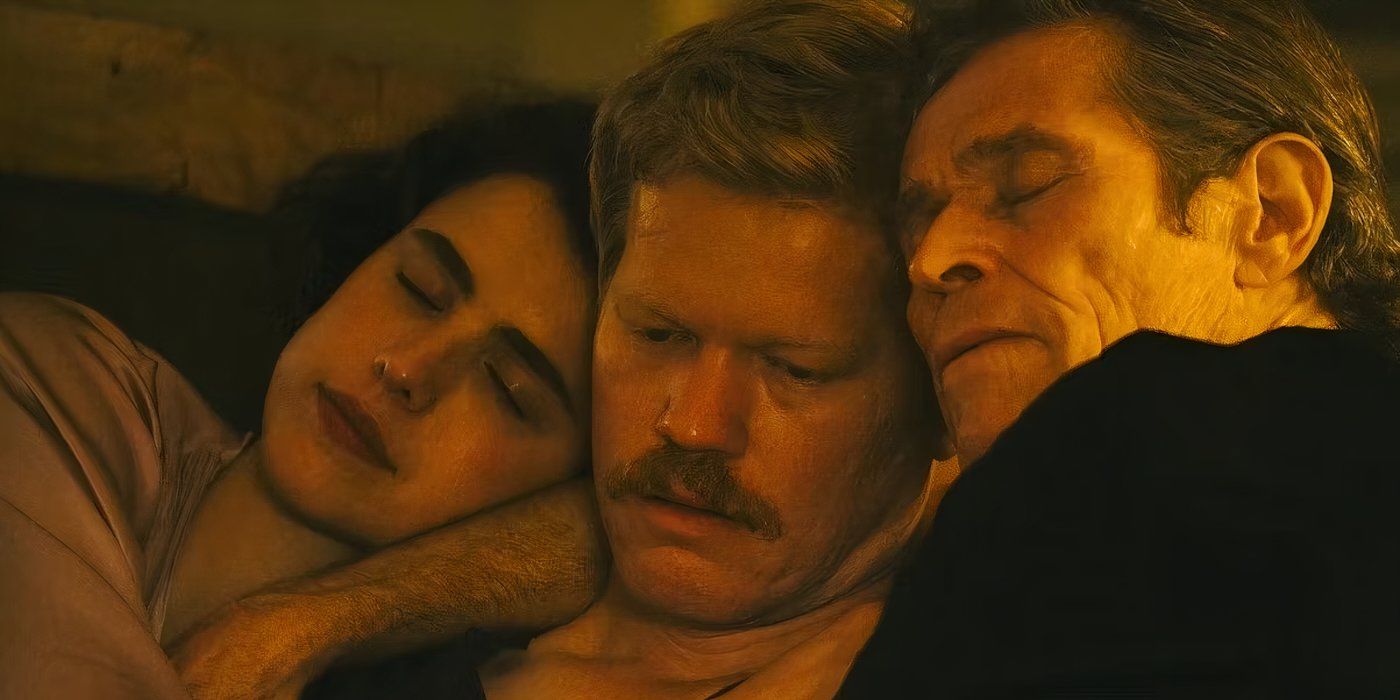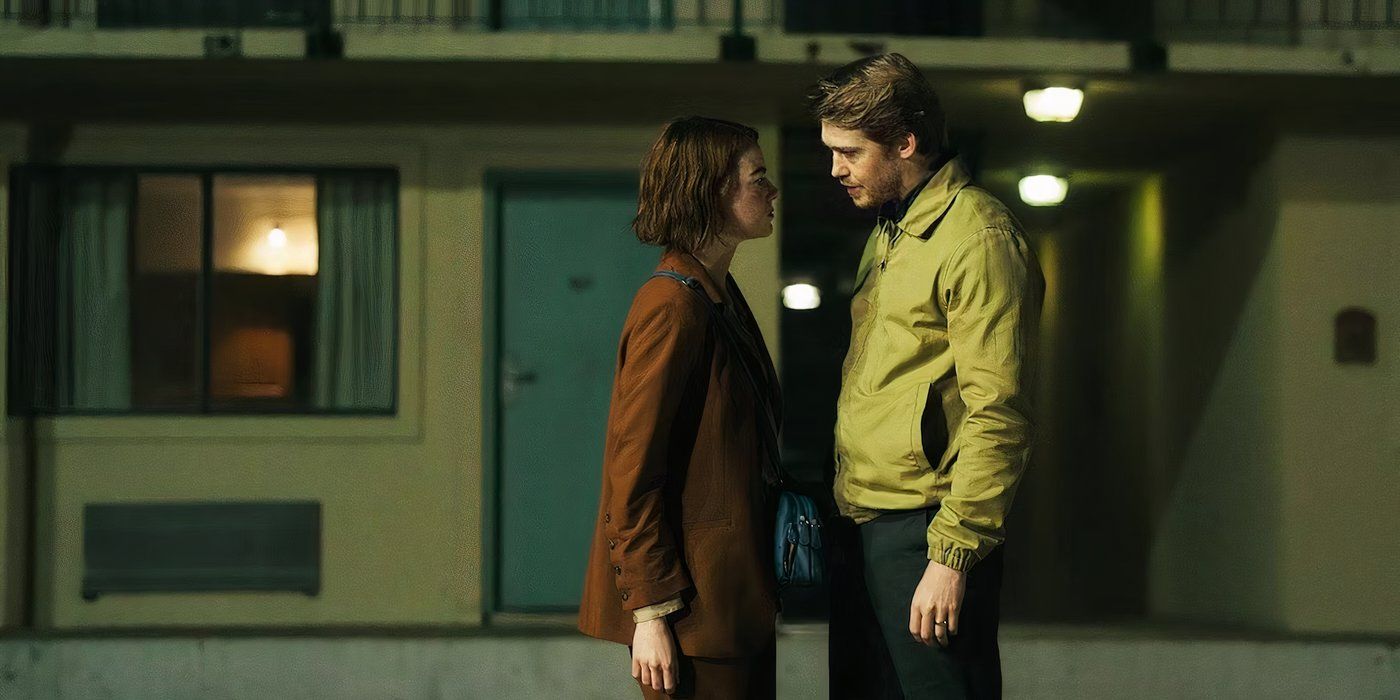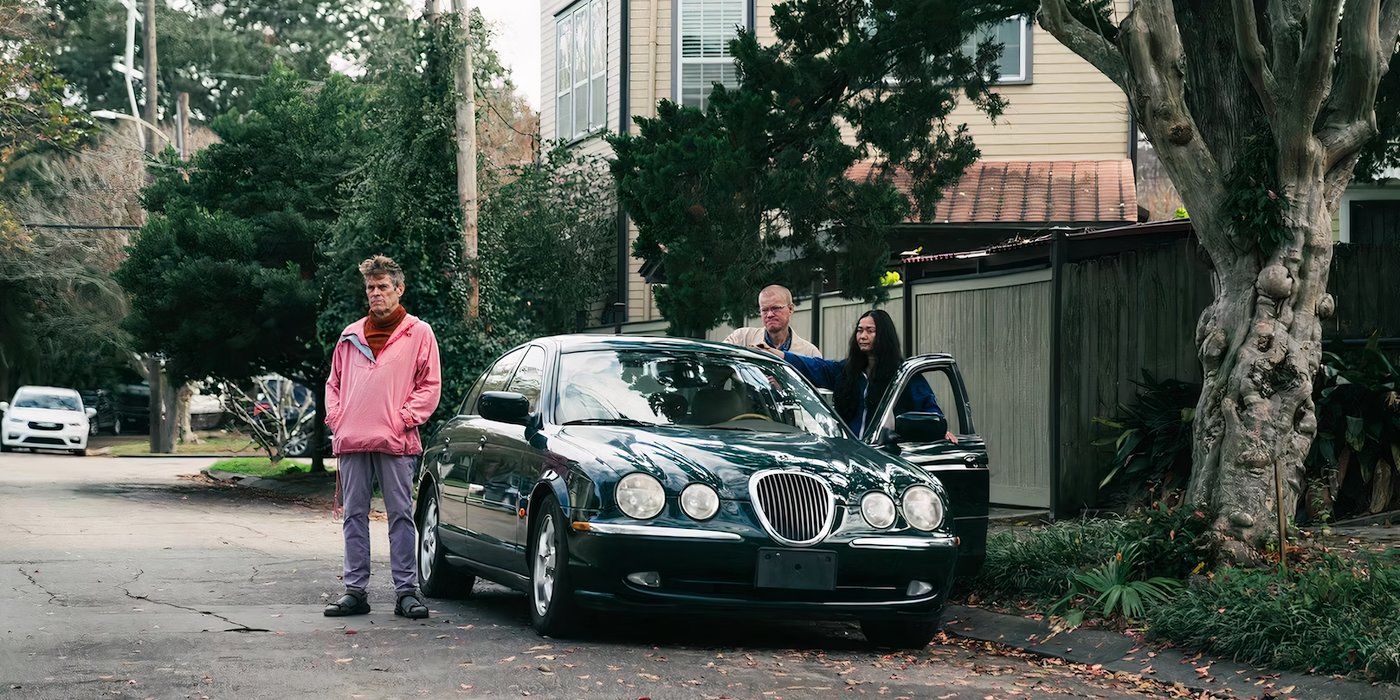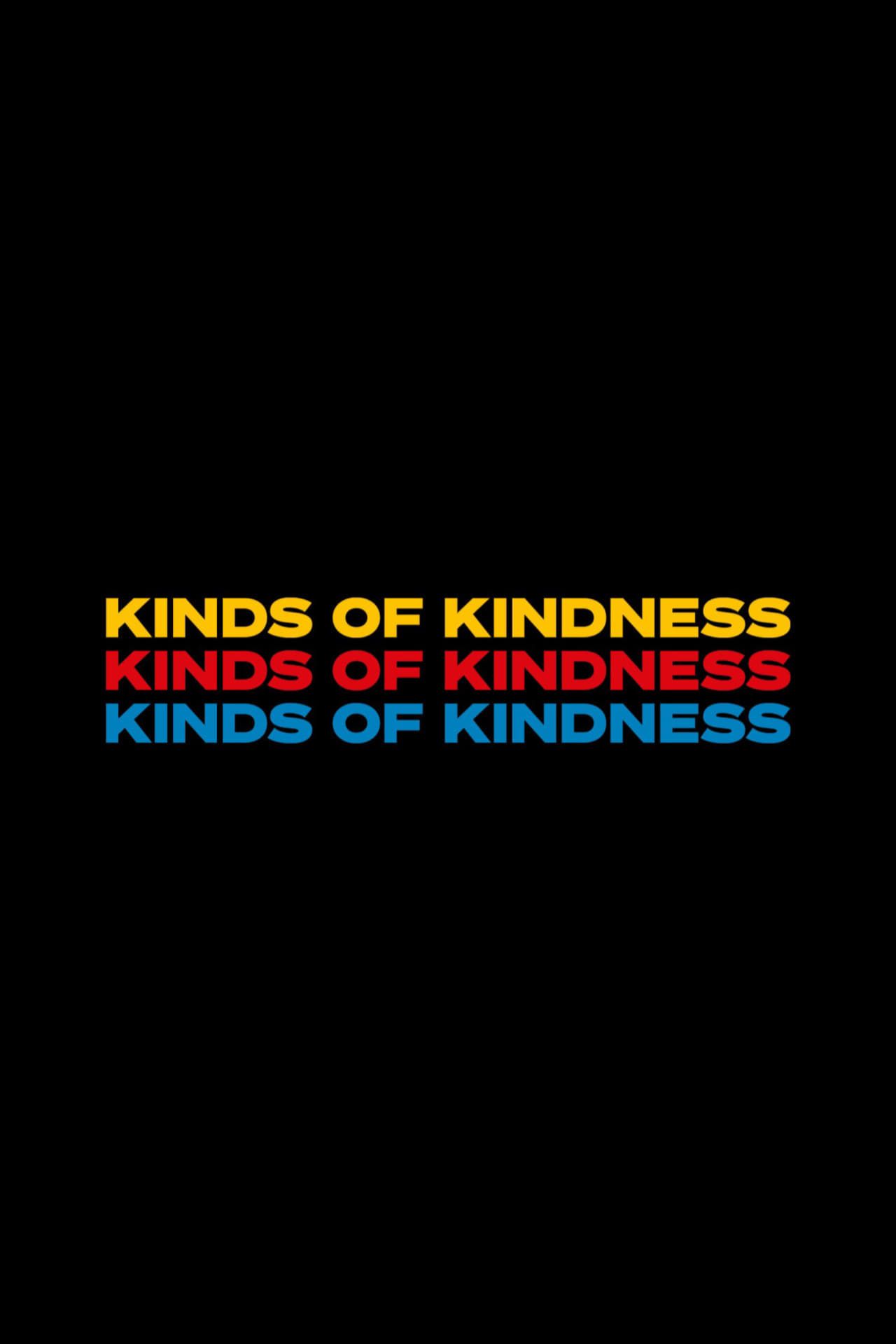Kinds Of Kindness Ending Explained

Warning: This post contains major spoilers for Kinds of Kindness
Summary
-
Kinds of Kindness
is an anthology film with a triptych format featuring the same cast in different roles. - R.M.F. is a recurring character connecting the three segments, symbolizing a god-like figure or an observer.
- The film explores themes of control, warped love, and the danger of toxic relationships, with a nihilistic perspective on human actions.
Kinds of Kindness’ ending might be just as strange and fascinating as the rest of Yorgos Lanthimos’ latest film. It’s an anthology that follows a triptych format and features the Kinds of Kindness cast playing different characters in each segment. Kinds of Kindness’ reviews were positive overall, and its final segment, “R.M.F. Eats a Sandwich,” sees Emma Stone’s Emily attempting to find Ruth (Margaret Qualley), who can bring people back from the dead, in a bid to please Omi and Aka (Willem Dafoe and Hong Chau, respectively), and return to the sex cult they lead.
After being banished from the cult for being “contaminated,” Emily is more determined than ever to prove herself. Emily drugs Ruth and brings her to the morgue so she can resurrect R.M.F. from the dead. Emily forces Ruth to put her hand on R.M.F. and the man wakes up. Thrilled, Emily puts Ruth in her car to take her back to Omi and Aka, but in her haste to get there (and not ensure Ruth has her seatbelt on), swerves and crashes the car. Ruth flies out of the windshield and dies.
Related
Where To Watch Kinds Of Kindness: Showtimes & Streaming Status
Emma Stone returns with another Yorgos Lanthimos movie, and there are options for where to watch Kinds of Kindness in theaters or on streaming.
Kinds Of Kindness’ R.M.F. Mystery Explained
R.M.F. is the only constant throughout the film
R.M.F. is a mysterious figure who appears in each segment; he’s also the only member of the cast who remains in the same role. In “The Death of R.M.F.,” he’s someone who consents to be killed by Robert, who refuses Raymond’s request initially. In “R.M.F. is Flying,” the character appears briefly flying a helicopter, and he’s brought back to life by Ruth, and subsequently eats said sandwich, in “R.M.F. Eats a Sandwich.” R.M.F. is the sole connection between the three parts, though what his initials stand for is unclear.
While his significance is never explained, R.M.F.’s presence grounds Kinds of Kindness to reality despite the absurdity of its three stories. R.M.F. doesn’t know any of the other characters directly, though it’s possible he’s some kind of immortal being who stays constant while everything else changes around him. R.M.F. could be a god-like stand-in who simply watches everyone do strange things, an observer of sorts. After all, he seems rather unfazed by the fact that he’s brought back to life and nearly killed in a car crash twice.
Regardless of what he’s doing, R.M.F. likely sees the cycle of his life and death as an inevitability and doesn’t resist them. He’s the one giving up control over his life, not beholden to anyone else, whereas every other character in Yorgos Lanthimos’ movie is working in service of someone or something. While Mamadou Athie and Joe Alwyn are among those who wear various masks, depending on the story, R.M.F. is the epitome of how one can be themselves so long as they’re not trying to please other people.
What All 3 Kinds Of Kindness Segments Have In Common
They may not be the same story, but they share similarities
Though all three segments of Kinds of Kindness are different, they also complement each other thematically. Each character, in one way or another, is attempting to gain someone’s approval. Whether that means Robert killing someone to stay in the good graces of Raymond, who holds power over him, or Liz trying to keep the love of her husband by fulfilling every outrageous and terrible request. The characters all do things to essentially maintain the status quo. They are dominated or, depending on the story, are the ones doing the dominating.
Robert, Liz, and Emily all try to keep the connection they have to those who hold some kind of power over them.
It’s about control and a warped sense of love, and how far they’re each willing to go to keep that love, no matter how abusive or awful it actually is. Robert, Liz, and Emily all try to keep the connection they have to those who hold some kind of power over them. They likely believe they love Raymond, Daniel, and Omi and Aka, respectively. They go to great lengths to keep them happy and to regain their trust. To that end, Kinds of Kindness showcases how toxic these kinds of relationships are, and the danger of staying in that cycle.
Every actor in the film plays a different character in each segment, except for Hunter Schaefer, who only appears in “R.M.F. Eats a Sandwich.”
Was Liz Actually Replaced By Someone Else On The Island Of Dogs?
The second segment keeps up the mystery
Lanthimos really messes with audiences’ minds in “R.M.F. is Flying,” and has us question whether Liz was actually replaced by a doppelgänger or if Daniel was just imagining it. It could have been his meds causing paranoia and his need to control her made him believe it. In the segment, Daniel has Liz’s dog tag, but Liz is also in possession of her dog tags when she returns. She also claims that the island she was stranded on was ruled by dogs, who gave them chocolate to eat, which explains why she eats chocolate despite disliking it before.
This Kinds of Kindness segment is a bit more murky than the other two. A second Liz appears at the end of it, embracing Daniel while the previous Liz lies dead with her liver removed. It’s a moment that brings many questions to the surface, with no clear answers. Liz could have been replaced, especially since there are two sets of dog tags with no explanation for them. But it’s more likely Daniel wants to believe she’s a doppelgänger to assuage his own guilt about being abusive. Lanthimos’ film is anything but straightforward, after all, and both could be true.
Kinds Of Kindness’ Title Is A Contrast To Its Nihilistic Perspective
Kinds of Kindness’ title is the exact opposite of its stories. The film isn’t about kindness at all — not to others or to oneself. None of the characters show an ounce of kindness to one another, though perhaps it’s how they perceive their treatment by those who are dominating them. For all its strangeness, Lanthimos’ film has a very nihilistic perspective on the world, and the way in which people move in it. Each segment finds its characters being driven to do horrible things, and none of them stop to think much about their actions because it’s desperation driving them.
While all of these characters do very human things, there’s a sense of cynicism that underscores the film’s stories. Kinds of Kindness sees every character acting in their own best interests in exchange for kindness — or a warped version of it. But there are conditions to the kindness they receive; it isn’t freely given. The film’s title sets up an expectation the stories and characters utterly destroy with their actions. In that way, the film leaves room to wonder about what kindness really means in a world that is also devoid of it.
The Real Meaning Of Kinds Of Kindness’ Ending
Kinds of Kindness ends with Ruth’s death (the fact she’s the one to die is ironic considering her gifts), and Emily freaking out because she can no longer take her to Omi and Aka. Meanwhile, R.M.F. lives on and eats his sandwich. The ending seems to be alluding to the strangeness of life and the idea that it can be comical — like it’s one big joke. Every time a character does something, it doesn’t go the way they expect it to; life happens regardless of the plans one makes, and it’s out of one’s control.












